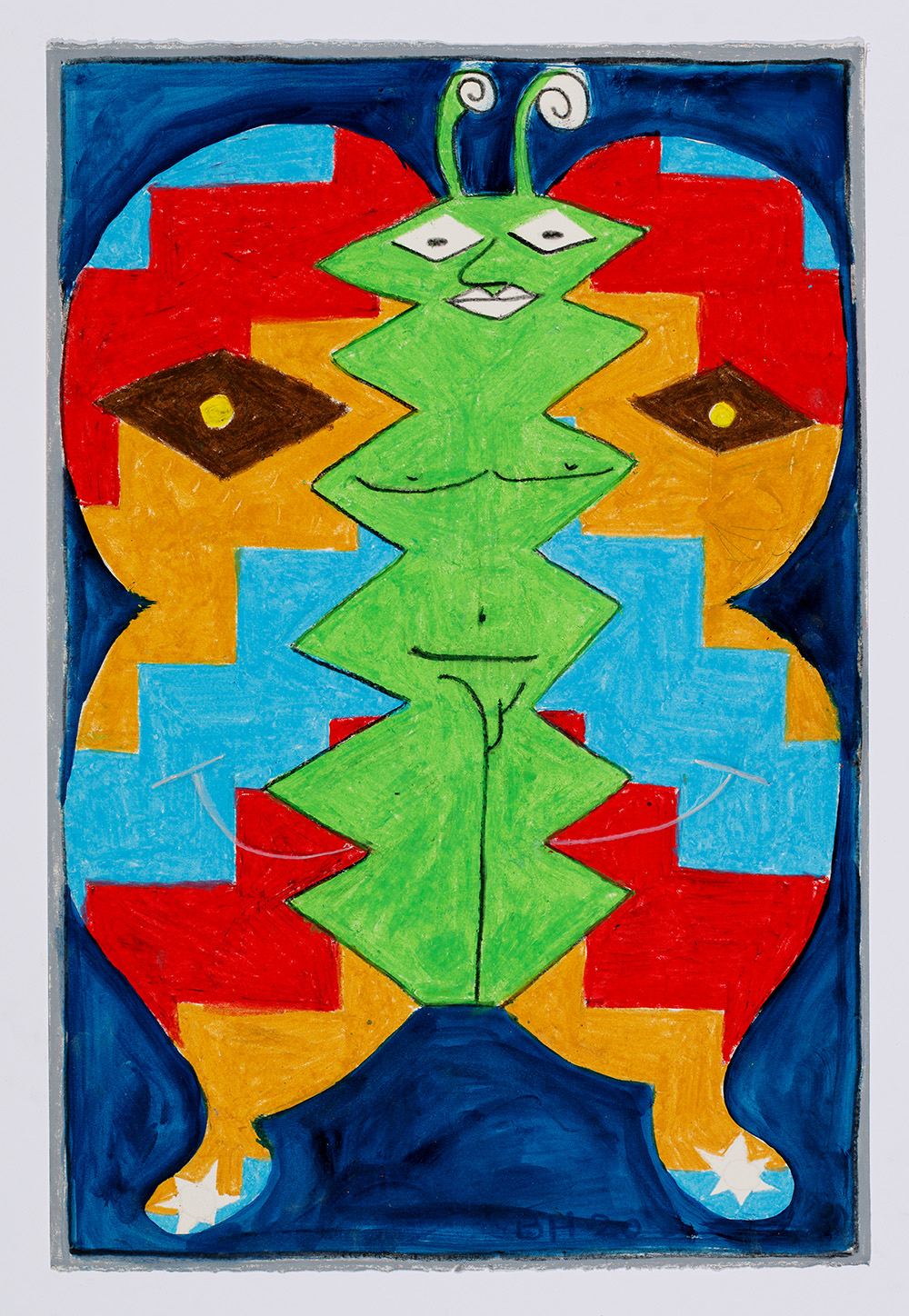Exhibitions
December
Pictures for Thinking
Pictures for Thinking has a wide breath of subjects: light, body, history, time, and measurement. Combinations of these subjects are used to elicit insights or to raise questions. In Bones III (pictured) penetrating light becomes the source illuminating the shared structures of our varied bodies.
The making of these artworks is akin to a chemical spill. It is an accident with an unpredictable result, but one in which chance and intuition coalesce. The entangled methodologies that bring these pictures to fruition include, in no particular order or hierarchy, the conventional mediums of print, drawing and painting.
– Benjamin Armstrong, February 2022
Image: Benjamin Armstrong Bones III 2021, pigment and binder on polyester , 174 x 143.5 x 4 cm

November
seeing time
seeing time is Brook Andrew‘s new body of work reflecting on ‘time’ and how one perceives and hopes to either manipulate or fall into ‘time’
These paintings were created during 2021 when the artist was focusing on alternative visions of not only time but how the world is shifting into what it means to decolonise, or to a state of yindyamarra-gunhanha (ongoing respect). yindyamarra-gunhanha is a term Brook Andrew has developed to deal with the often challenging space of museum research and repatriation.
The signature black and white patterns are inspired by his Wiradjuri cultural heritage which in its abstract state, continues to remind himself and others of the strength and continuing cultura of the Wiradjuri.
Image: Brook Andrew seeing time VII 2021, mixed media on linen, 235 x 235 cm
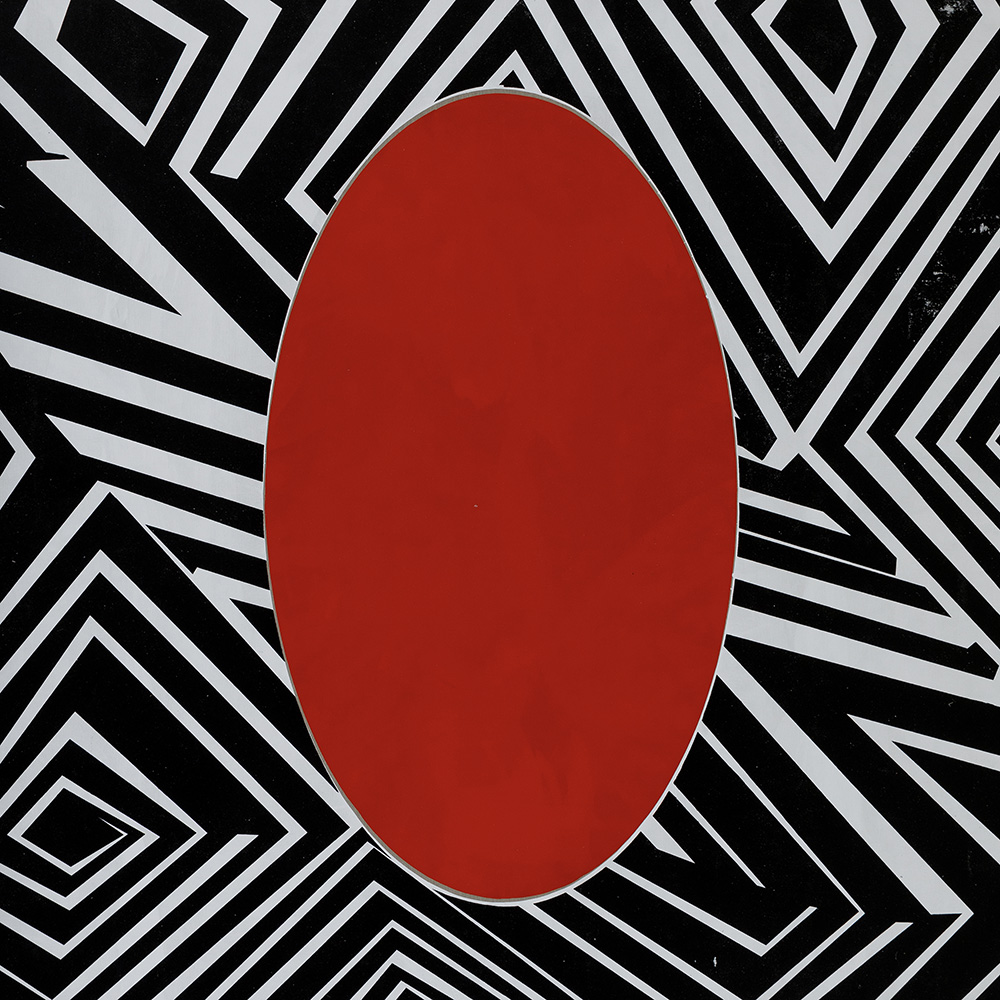
October
Creed
Sofitel Melbourne on Collins
Summer Salon Show
Sofi’s Lounge, Level 1
25 Collins Street
Melbourne 3000
With thanks to Global Art Projects
Image: Tim Johnson Thredbo Valley 2021, acrylic on linen, 183 x 244 cm
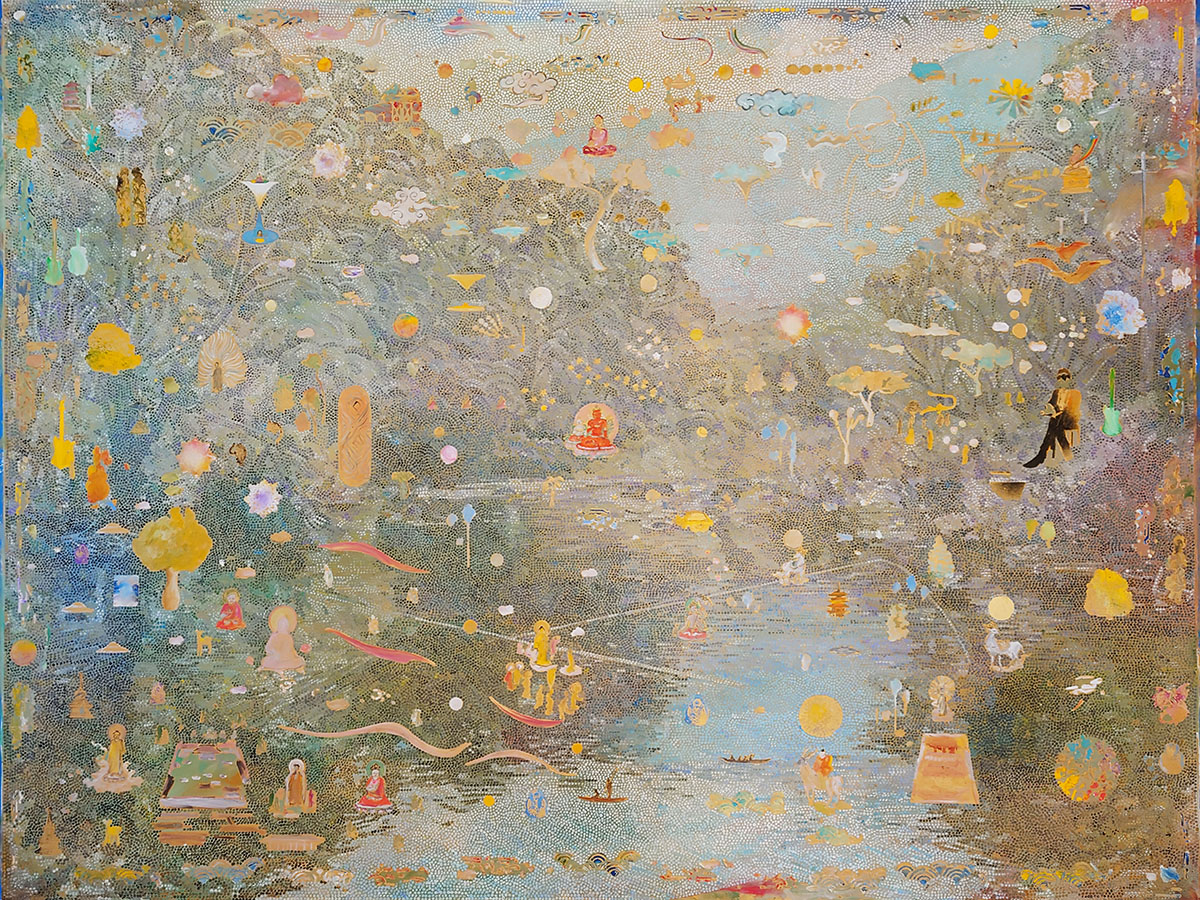
September
A History of Images
Danie Mellor‘s new suite of paintings A History of Images provide an intimate glimpse into a pictorial past, a collection of experiences that lie in archival memory beyond our tangible reach.
Image: Danie Mellor Promises 2021, acrylic on board with gesso and iridescent wash, 40.5 x 30.4 cm
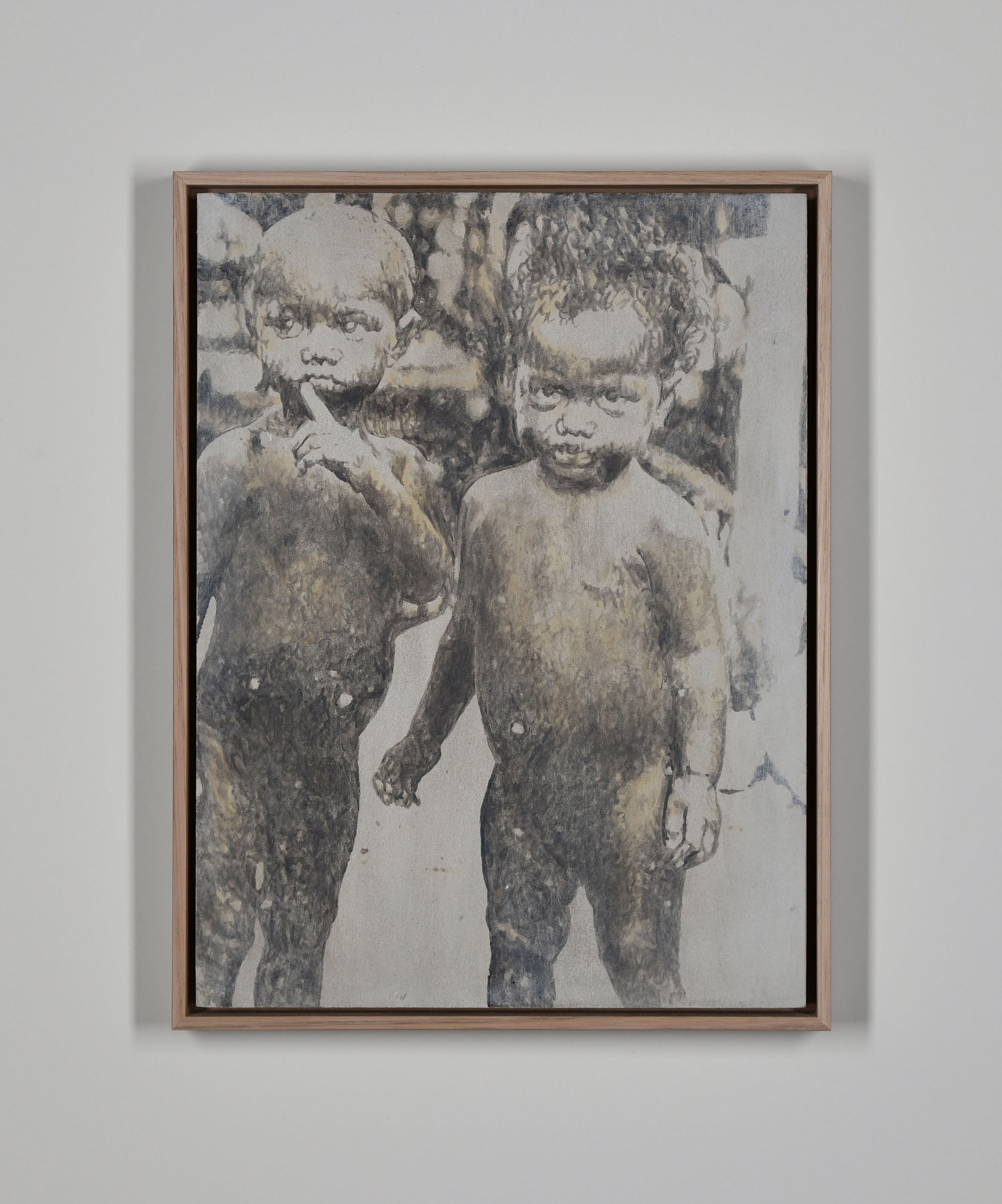
August
The Stations 2021
Brent Harris is well known for haunting imagery that drifts between abstraction and figuration. For more than four decades, the artist has engaged in a sustained investigation into the human condition, producing paintings, prints and drawings that address universal themes such as intimacy, desire, spirituality, sexuality and mortality.
More than thirty years ago, Harris produced a series on the Stations of the Cross for which he received widespread critical acclaim as a young artist.
In 2020, Harris returned to the subject with The Stations 2021, a new body of work comprising 14 polymer gravure etchings with watercolour.
Each image size: 47.5 x 37.5 cm
Each sheet size: 71.5 x 56 cm
Edition of 20
Each sheet has been hand coloured with water colour, making each print unique.
The series was printed and editioned at Viridian Press, Benalla by John Loane.
This project was generously supported by Paul Walker and Patricia Mason.
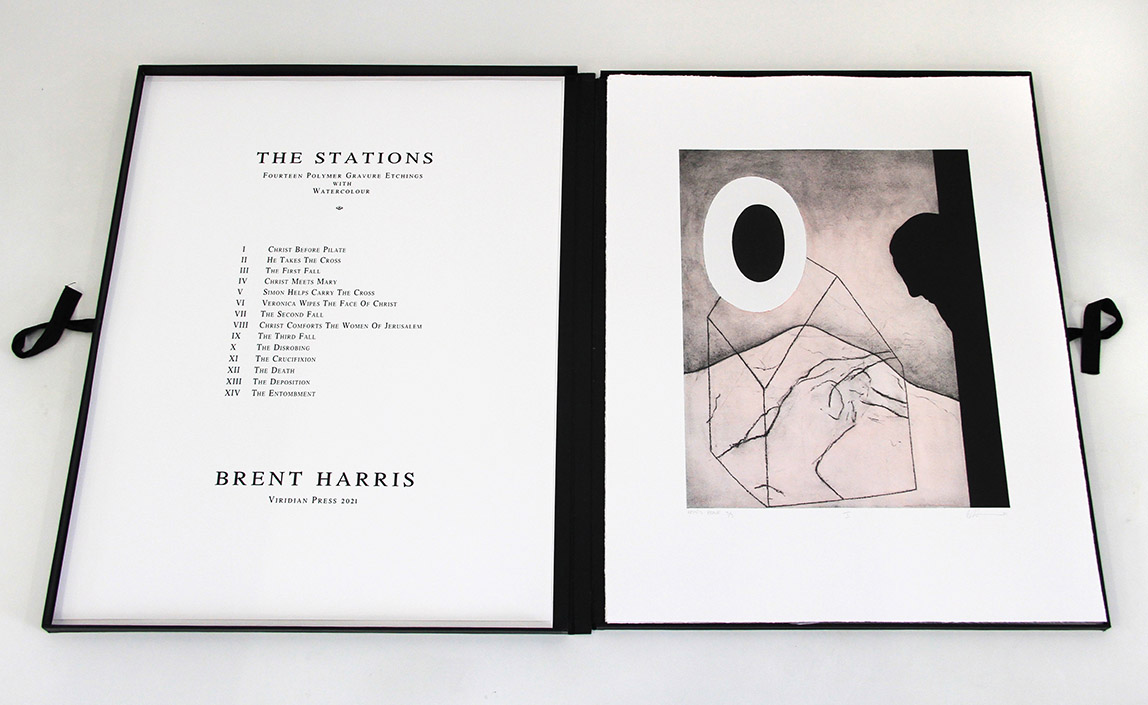
August
Bloom Lab
Caroline Rothwell’s Bloom Lab evolves from her recent digital project Infinite Herbarium.
Infinite Herbarium launched concurrently at Museum of Contemporary Art as part of The National 2021: New Australian Art (26 March – 22 August 2021) and at The Royal Botanic Garden Sydney (26 March – 31 August 2021).
Made in collaboration with Google Creative Lab in Sydney, Infinite Herbarium, is a series of six, 28 minute HD video works, featuring a score by Theodore Wohng.
Each video was created using Artificial Intelligence (AI) and machine-learning processes, drawing on data-sets of imagery from the open-source Biodiversity Heritage Library as well as a series of recently photographed plants. Rothwell’s practice often responds to archival material in museums, public collections and journals, and here she takes primary research to a bold and innovative new digital artistic space.
The Bloom Lab exhibition comprises the Infinite Herbarium six-video installation, along with companion works: three suspended sculptures, and paintings that have also drawn their forms from her hybrid digital archive.
Image: Caroline Rothwell Bloom Lab. Installation image by Tina Douglas
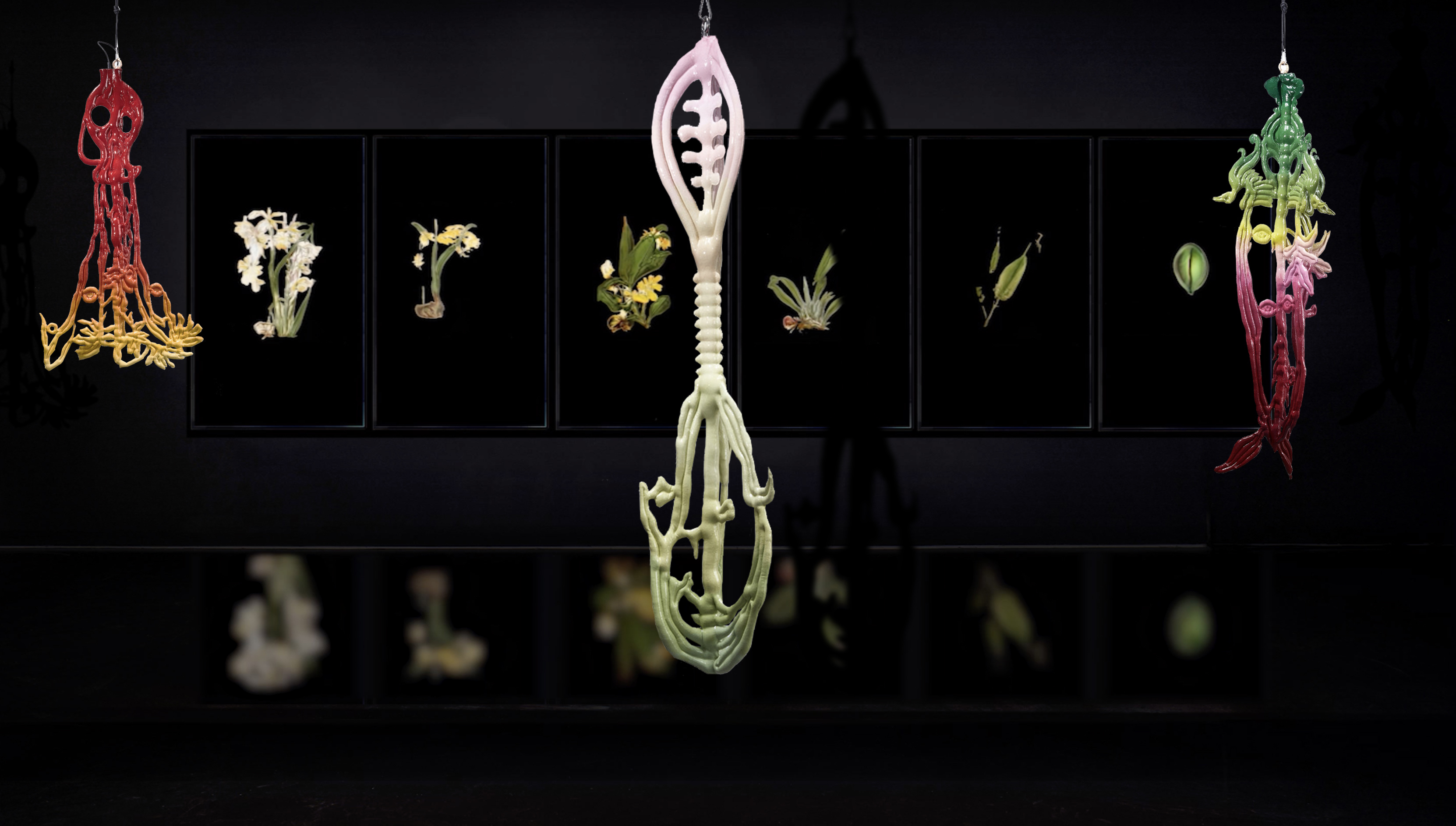
July
The Beach
A body of work by Ben Quilty made in the lead up to the last American Presidential election, and then continued through recent pandemic times and lockdown.
During that time, he was given a book by the American Realist painter, George Bellows, and it has not left his studio since. Bellow’s paintings of men boxing illegally in early 20th century fight clubs was the starting point for this exhibition. Taking multiple screen shots of UFC fighters locked in deadly and bloody combat, and hosting a team of local boxers, Quilty posed questions about contemporary humanity.
In 1913 boxing was illegal in New York State and the ruling men believed boxing would never be a part of a sophisticated contemporary society. But now, taking the most basic rules away from boxing we are left with UFC and pondering our blood thirsty, ultra-violent return to Roman times, without the social order.
Named after famous beaches around Australia, the fighting men also evoke memories of the Cronulla Riots and continue Quilty’s exploration of Australian cultural identity and the darker sides of Island Life.
“To make paintings of men punching the life out of each other feels like an apt response to being alive in 2021,” Quilty says.
Image: BEN QUILTY The Crowd 2021, oil on linen, 180 x 202 cm
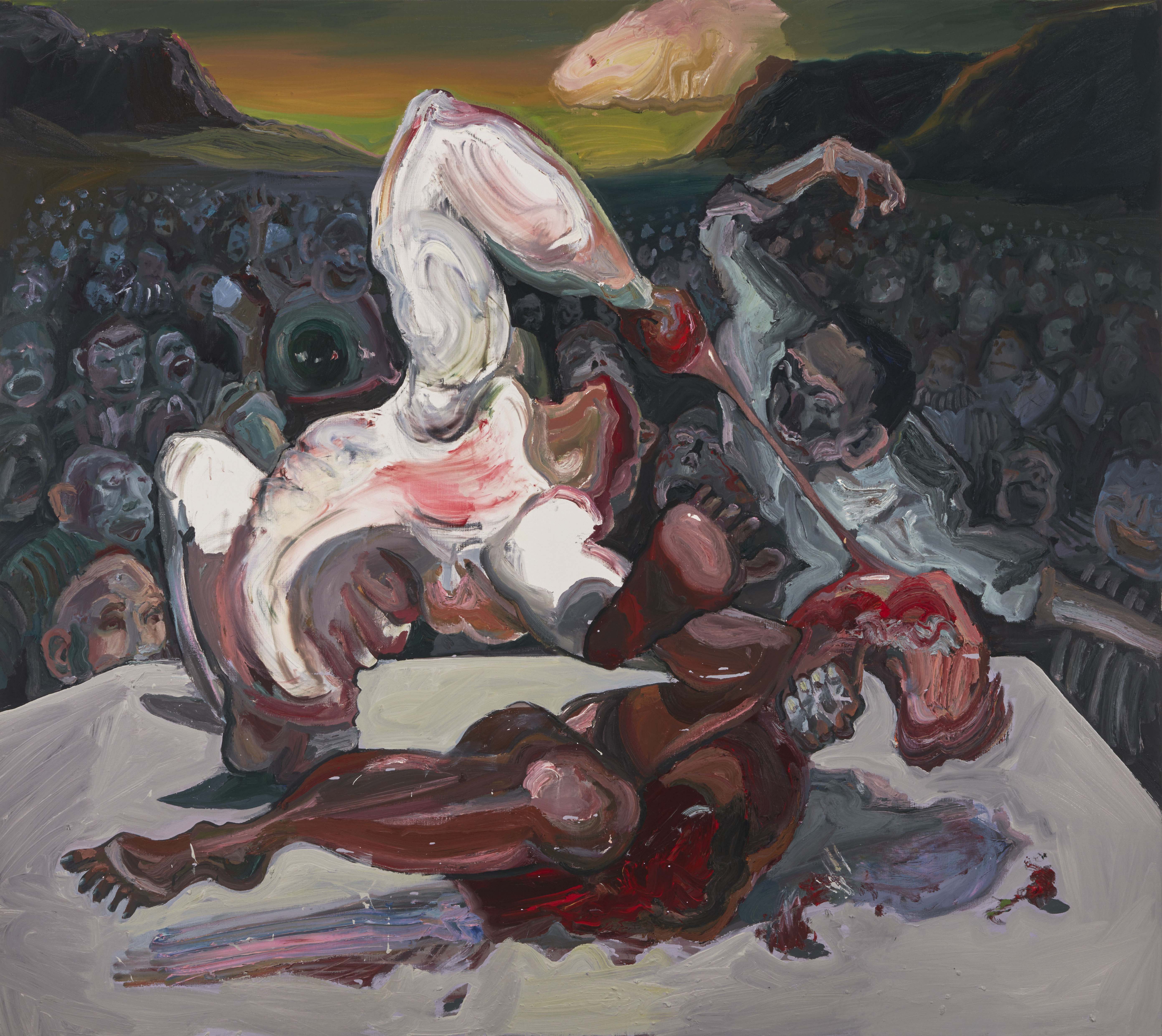
April
Shoegazer 2.0
There is a crack, a crack in everything
That’s how the light gets in
– Leonard Cohen
In 2020, Melbourne artist Andrew Browne spent the long COVID-19 lockdown developing Shoegazer, a series of drawings premiering online in August 2020. A playful allusion to Shoegaze, a 1990s subgenre of indie rock, the title refers more to subjects and prompts found close at hand… almost underfoot.
These drawings of modest subjects, rich in association, serve as touchstones for Shoegazer 2.0, Andrew Browne’s new collection of paintings: the accidental abstractions of foot-path repairs; a tenacious dandelion emerging from a crevice; a spill of obscure yet florescent liquid; a crazy-patterned mural, or so much carelessly discarded detritus.
As paintings, these introspective images now loom large and take on a heightened significance. Browne highlights uncanny juxtapositions, flashes of colour and discovers secret portals. In these fleeting street scenes, moments of humour, joy and reverie are captured.
Continuing Andrew Browne’s longheld interest in landscape and surreal natural phenomena, Shoegazer 2.0 shines a light on visions that reflect and connect us all.
Read the Melbourne Art Seen review by Gerry Bell.
Image: ANDREW BROWNE Rockaway 2021, oil and aluminium pigment on linen, 191 x 132 cm
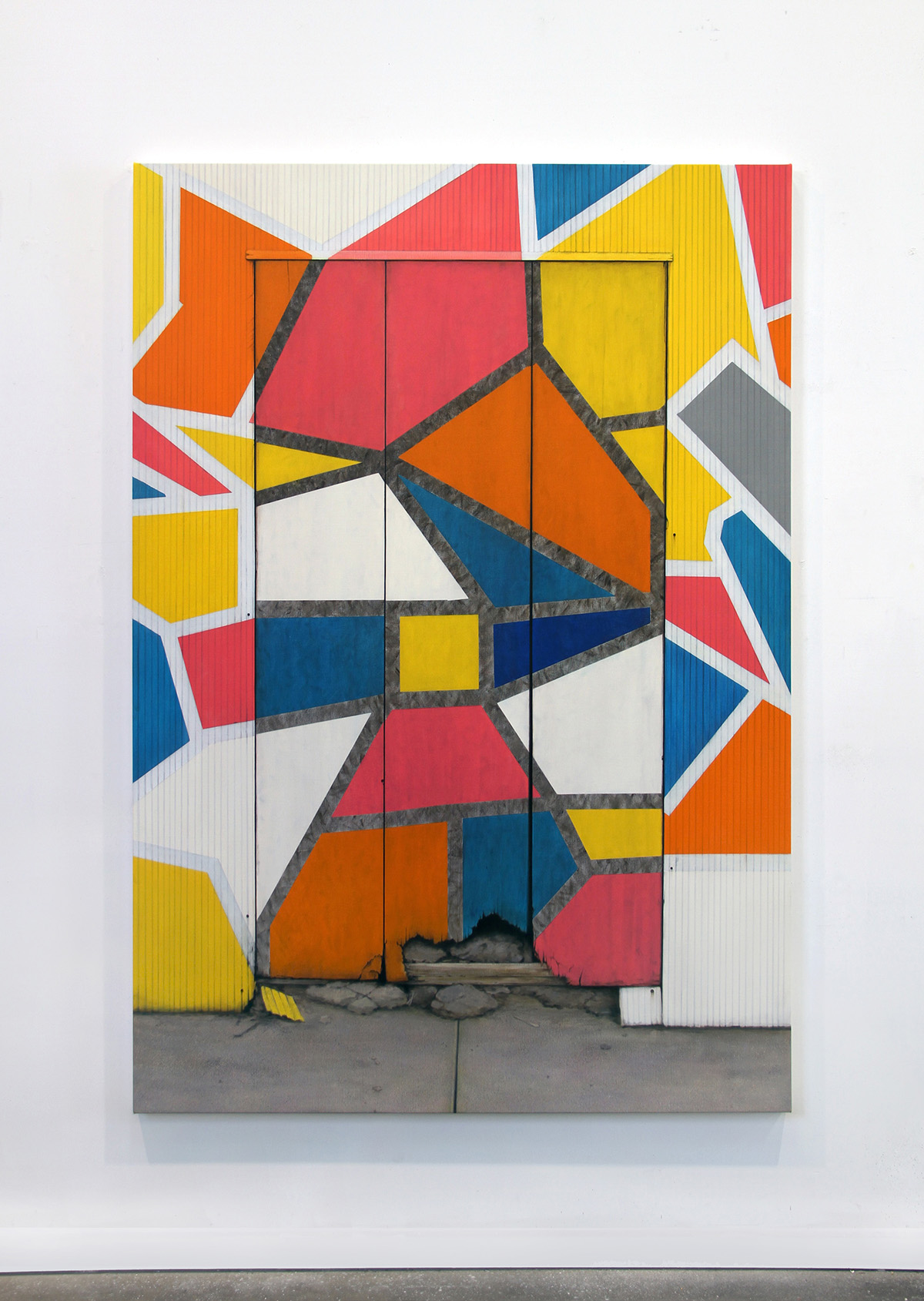
April
Bill Henson
A new collection of previously unseen important Bill Henson photographs.
Read more in The Age (26 June 2021).
Image: BILL HENSON Untitled JPC SH173 N14 2001-2021, archival inkjet pigment print, 127 x 180 cm (paper size), edition of 5 + 2 AP
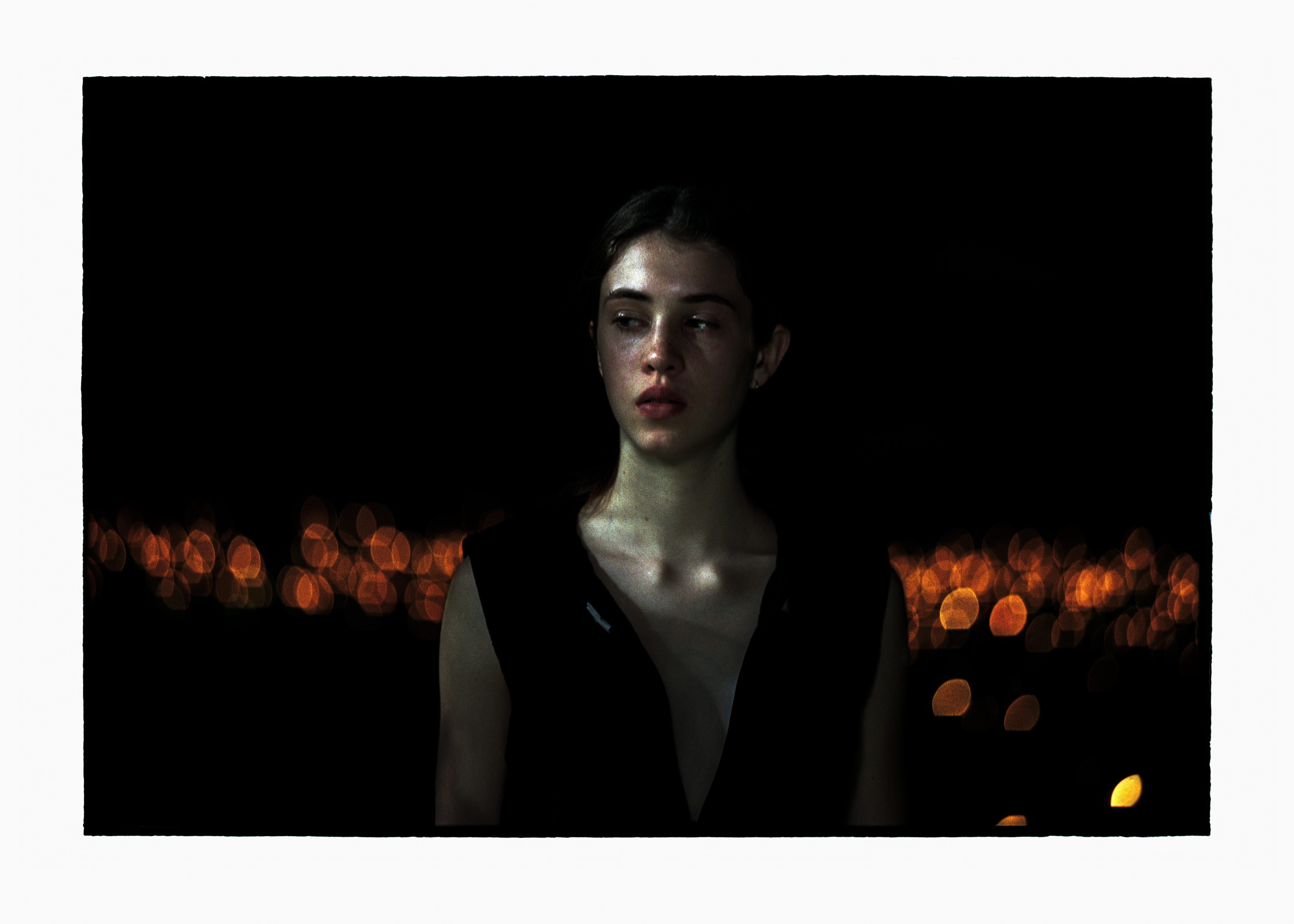
March
Without Within
A new collection of paintings and sculptures.
Read an interview with Brendan Huntley in Artist Profile. Listen to Brendan Huntley interviewed on 3RRR (go to 01:03:00 to hear the interview during the Maps program with Fee B-Squared).
Image: Brendan Huntley Untitled (moth) 2020, oil pastel, dry pastel, oil and graphite on archival paper, 61.5 x 42 cm (framed)
